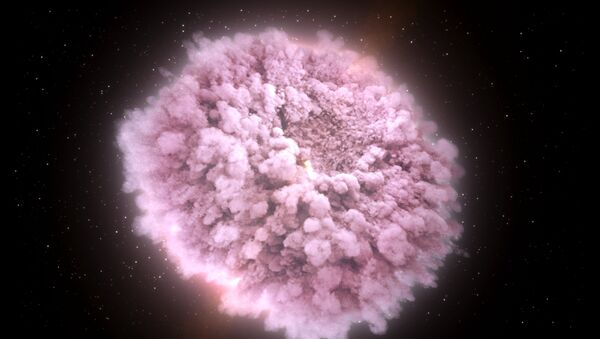Scientists have detected the motion of material moving through space after a dramatic neutron-star merger in a galaxy 130 million light-years from Earth. They reported their findings in the journal Nature, where they claimed that because the outflow of particles took place at a trajectory 20 degrees away from the Earth's, an illusion resulted, where the particles seemed to be zipping along at four times the speed of light. In fact, they said, the particles were travelling more slowly than at light speed. According to Einstein's Theory of Special Relativity, it is physically impossible to travel faster than the speed of light.
READ MORE: Russian Astronomers Warn of Green 'Incredible Hulk' Comet in Night Sky
The collision of the two super-dense neutron stars, remnants of massive stars that died in supernova explosions, ejected a shell of debris into space. Inside this shell, they collapsed into a black hole whose powerful gravity began sucking up material like gas and dust. That material formed a rapidly-spinning disk that shot out a pair of jets that erupted from its poles, shooting into space.
The collision was spotted last August; the jet was first spotted 75 days after the merger, then again 230 days after. It was detected via the Very Long Baseline Array, a system of ten radio telescopes. The motion was so fast that it could only by explained by a jet, a superfast outflow of plasma.
"Jets are enigmatic phenomena seen in a number of environments, and now these exquisite observations in the radio part of the electromagnetic spectrum are providing fascinating insight into them, helping us understand how they work," said Joe Pesce, a program director at the National Science Foundation.



